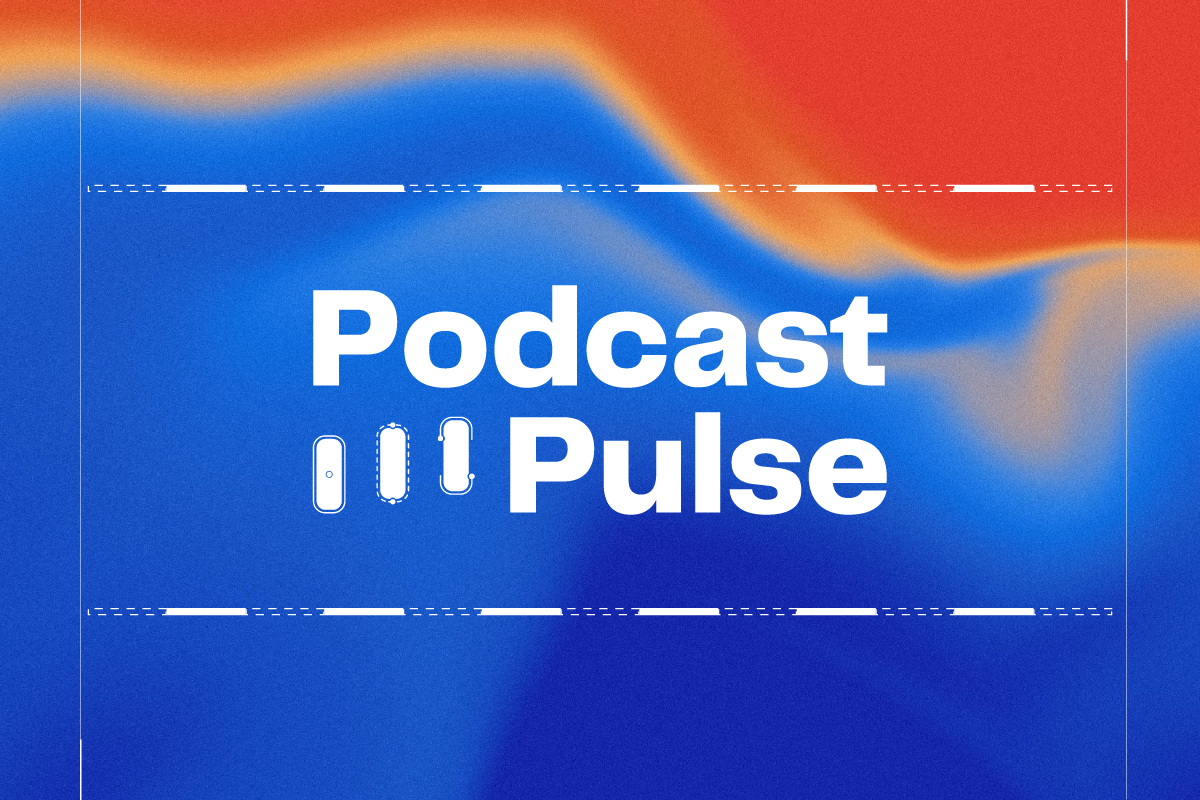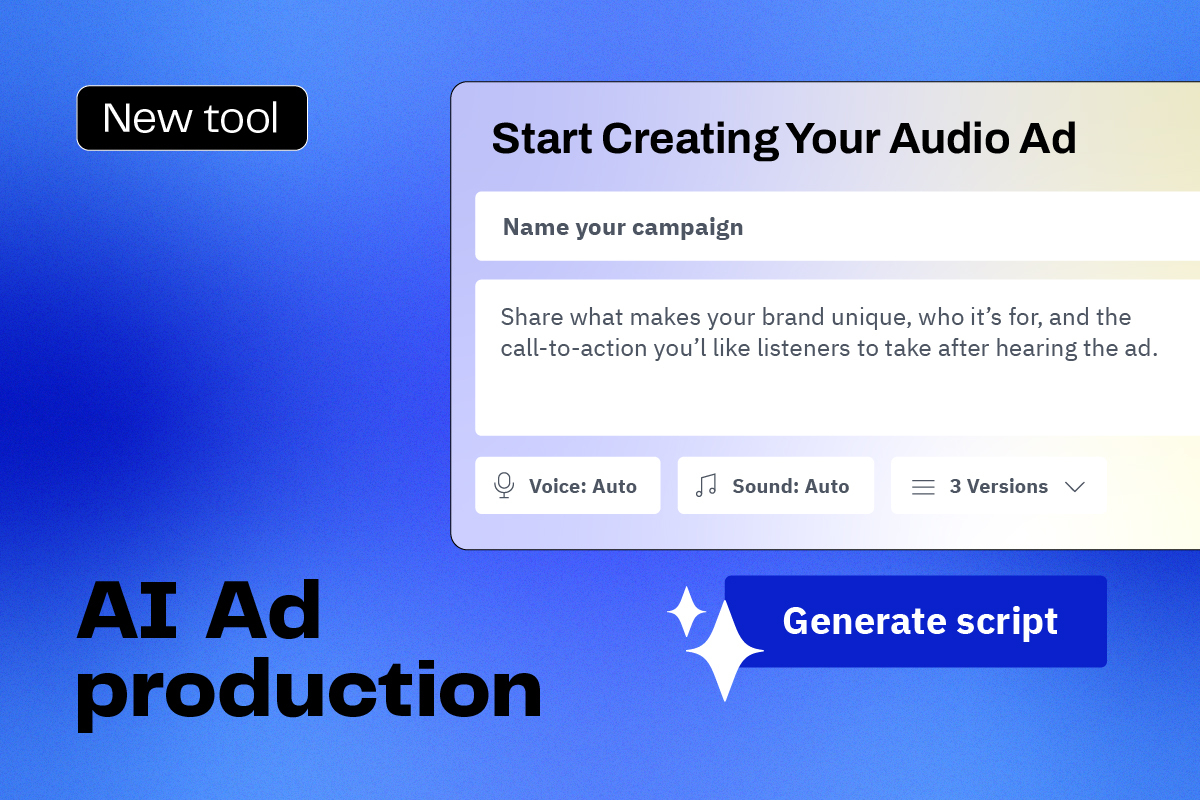Veritonic and Acast Partner to Highlight What Success Sounds Like Around the World for Podcast Ads Bought Programmatically

Press Release
New global research from industry leaders shows commonalities and differences in programmatic ad creative in podcasts
Veritonic, the industry’s comprehensive audio analytics and research platform, partnered with Acast, the world’s largest independent podcast company, to bring new data to market around the commonalities - and divergence - of audio creative on podcast ads served programmatically. In addition to identifying these global overlaps and points of difference, the goal of the research was also to help media buyers identify strong tactics and best practices in programmatic podcast advertising across three key media markets: the US, Australia and New Zealand, and EMEA.
Together, the companies sourced and analyzed podcast ads transacted programmatically with Acast and spanning various industry verticals including: automotive, tourism, retail, healthcare, entertainment, and more. They then identified the common threads and differences in the creative executions by region by examining themes like ad length, number of voiceovers, gender of voiceover, use of sound effects, call to action placements, and more.
“As an industry there is still a lot of myth-busting to do around programmatic ad buying. At Acast, we firmly believe that programmatic advertising should not be a rigid experience for the media buyer, podcast host, and certainly not the listener,” said Elli Dimitroulakos, Global Head of Ad Innovation at Acast. “Podcast advertising is effective because it’s a seamless part of the listening experience and that shouldn’t change based on how a transaction occurs. Programmatic ads can – and should – have creative elements that enhance the listener experience and brand relationship.”
According to the research, across all markets the majority of ads were a minimum of 30 seconds in length. This was most predominant in the US and EMEA regions which resulted in 80% and 73% of the examined ads, respectively. The Australia and New Zealand market trailed slightly behind with 56% of programmatic ads running at least 30 seconds long. The remaining 44% in the market were 15 seconds in length.
All three markets also reflected similarities in the use of single voices for the voiceover content. The US led the way with 86% of programmatic ads in the study using a single voice for the voiceover. EMEA and Australia and New Zealand were most similar with 66% and 68% of programmatic ads using a single voice for the voiceover, respectively.
However, when it came to gender detection in voiceover content, dissimilarities across the markets presented themselves. In the US, half of ads analyzed featured a female voiceover, 47% of ads featured a male voiceover, and the remaining 3% featuring both male and female voice.overs Looking at ads that ran in Australia and New Zealand, 53% of the creatives featured a female voice over, but just 27% a male voice, and 20% contained both a female and a male voiceover.
In near equal numbers, the three regions all used sound effects in slightly less than the majority of programmatic ads, indicating that this may be a newly emerging trend in the space. According to the study, sound effects including birds chirping, phones ringing, engines revving, and more were used in 40% of programmatic ads from the US, 38% from Australia and New Zealand, and 33% in EMEA.
“Hope is not a strategy; it’s no longer enough for a brand to create an audio asset and simply hope it’ll move the needle,” said Scott Simonelli, CEO of Veritonic. “Having confidence that your marketing efforts and investments will pay off is crucial, especially in today’s economy. With audio reaching more than 214M adults in the U.S. monthly and having a 36% higher impact on memory than video, marketers need to be leveraging creative testing solutions like the Veritonic platform to ensure they are putting their best audio creative forward, regardless of how the ad itself is purchased or served.”
To download the infographics with results from each region, please visit the following links:
For more information on how you can make decisions in audio by leveraging the industry’s most comprehensive research and analytics solutions, contact marketing@veritonic.com. For more information on buying podcast ads programmatically, please contact automated@acast.com.
About Veritonic
World-renowned brands, agencies, publishers, and platforms rely on Veritonic’s comprehensive audio research and analytics platform to research, test, and measure the ROI of their audio assets and campaigns pre-market, in-market, and post-campaign. The resulting insight enables clients to gain confidence in their audio investment, mitigate risk through optimization, and increase their return as they engage consumers with compelling audio experiences. For more information, visit https://www.veritonic.com.
About Acast
Since 2014, Acast has been creating the world’s most valuable podcast marketplace, building the technology which connects podcast creators, advertisers and listeners. Its marketplace spans 92,000 podcasts, 2,300 advertisers and 430 million monthly listens. Crucially, those listens are monetized wherever they happen — across any podcasting app or other listening platform. The company operates worldwide and is headquartered in Stockholm, Sweden. Acast is listed on Nasdaq First North Premier Growth Market (ACAST.ST).
Press Release
New global research from industry leaders shows commonalities and differences in programmatic ad creative in podcasts
Veritonic, the industry’s comprehensive audio analytics and research platform, partnered with Acast, the world’s largest independent podcast company, to bring new data to market around the commonalities - and divergence - of audio creative on podcast ads served programmatically. In addition to identifying these global overlaps and points of difference, the goal of the research was also to help media buyers identify strong tactics and best practices in programmatic podcast advertising across three key media markets: the US, Australia and New Zealand, and EMEA.
Together, the companies sourced and analyzed podcast ads transacted programmatically with Acast and spanning various industry verticals including: automotive, tourism, retail, healthcare, entertainment, and more. They then identified the common threads and differences in the creative executions by region by examining themes like ad length, number of voiceovers, gender of voiceover, use of sound effects, call to action placements, and more.
“As an industry there is still a lot of myth-busting to do around programmatic ad buying. At Acast, we firmly believe that programmatic advertising should not be a rigid experience for the media buyer, podcast host, and certainly not the listener,” said Elli Dimitroulakos, Global Head of Ad Innovation at Acast. “Podcast advertising is effective because it’s a seamless part of the listening experience and that shouldn’t change based on how a transaction occurs. Programmatic ads can – and should – have creative elements that enhance the listener experience and brand relationship.”
According to the research, across all markets the majority of ads were a minimum of 30 seconds in length. This was most predominant in the US and EMEA regions which resulted in 80% and 73% of the examined ads, respectively. The Australia and New Zealand market trailed slightly behind with 56% of programmatic ads running at least 30 seconds long. The remaining 44% in the market were 15 seconds in length.
All three markets also reflected similarities in the use of single voices for the voiceover content. The US led the way with 86% of programmatic ads in the study using a single voice for the voiceover. EMEA and Australia and New Zealand were most similar with 66% and 68% of programmatic ads using a single voice for the voiceover, respectively.
However, when it came to gender detection in voiceover content, dissimilarities across the markets presented themselves. In the US, half of ads analyzed featured a female voiceover, 47% of ads featured a male voiceover, and the remaining 3% featuring both male and female voice.overs Looking at ads that ran in Australia and New Zealand, 53% of the creatives featured a female voice over, but just 27% a male voice, and 20% contained both a female and a male voiceover.
In near equal numbers, the three regions all used sound effects in slightly less than the majority of programmatic ads, indicating that this may be a newly emerging trend in the space. According to the study, sound effects including birds chirping, phones ringing, engines revving, and more were used in 40% of programmatic ads from the US, 38% from Australia and New Zealand, and 33% in EMEA.
“Hope is not a strategy; it’s no longer enough for a brand to create an audio asset and simply hope it’ll move the needle,” said Scott Simonelli, CEO of Veritonic. “Having confidence that your marketing efforts and investments will pay off is crucial, especially in today’s economy. With audio reaching more than 214M adults in the U.S. monthly and having a 36% higher impact on memory than video, marketers need to be leveraging creative testing solutions like the Veritonic platform to ensure they are putting their best audio creative forward, regardless of how the ad itself is purchased or served.”
To download the infographics with results from each region, please visit the following links:
For more information on how you can make decisions in audio by leveraging the industry’s most comprehensive research and analytics solutions, contact marketing@veritonic.com. For more information on buying podcast ads programmatically, please contact automated@acast.com.
About Veritonic
World-renowned brands, agencies, publishers, and platforms rely on Veritonic’s comprehensive audio research and analytics platform to research, test, and measure the ROI of their audio assets and campaigns pre-market, in-market, and post-campaign. The resulting insight enables clients to gain confidence in their audio investment, mitigate risk through optimization, and increase their return as they engage consumers with compelling audio experiences. For more information, visit https://www.veritonic.com.
About Acast
Since 2014, Acast has been creating the world’s most valuable podcast marketplace, building the technology which connects podcast creators, advertisers and listeners. Its marketplace spans 92,000 podcasts, 2,300 advertisers and 430 million monthly listens. Crucially, those listens are monetized wherever they happen — across any podcasting app or other listening platform. The company operates worldwide and is headquartered in Stockholm, Sweden. Acast is listed on Nasdaq First North Premier Growth Market (ACAST.ST).





